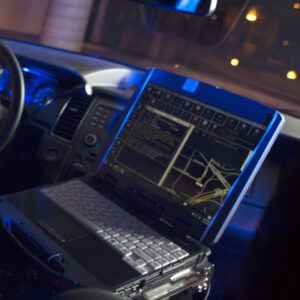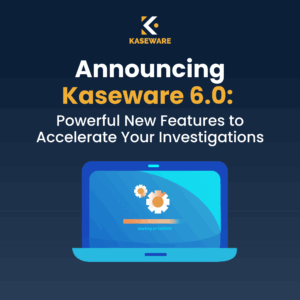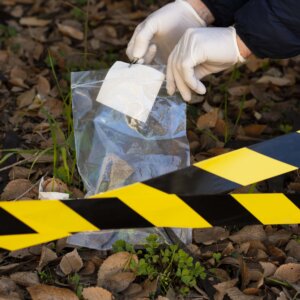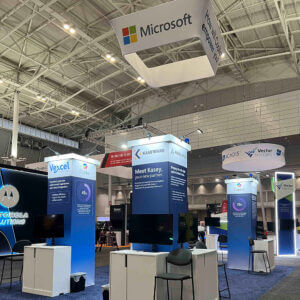Law Enforcement 101
By Korinne Condie
Starting at the Beginning
I started Kaseware having less than zero knowledge about law enforcement. I had never been inside a police station, never called 911, and never seen the inside of a patrol car. I have never even gotten a speeding ticket (though I’m knocking on wood as I say that).
So I immediately started Law Enforcement 101. It includes these three steps.
Law Enforcement 101
Step 1: Ride Along with a Sheriff’s Deputy
The start of my “shift” was at 6 am, when I was assigned my ride-along deputy. Or more precisely, a deputy drew the short straw and had to have a ride-along. Having never been in a sheriff’s patrol car, it started with a game of 20 questions, primarily “what does this do.” Luckily I had a very understanding deputy, who patiently explained all of the nuances of his job. He showed how the dispatcher would send him to respond to 911 calls. This involved a close look at his mobile data terminal (MDT), which showed every officer, the calls they were on, and where they were (see photo on right). All of this was happening as we drove around the usual patrol routes.
Then came the excitement. A call for service came in! It was sent to 10 different units, and with lights and sirens blaring we flew through Highlands Ranch, Colorado. It was going to be just like I imagined from the movies — the sheriff speeding to the scene of the crime, drawing his weapon, taking out the bad guys, protecting the town. The reality was much less exciting — it was a false alarm. With lights and sirens turned off, we returned to patrolling neighborhoods.
But false alarms aside, it was a fire hose of knowledge:
- Learning how their IT system works (or does not work).
- How a deputy responds to 911 calls.
- How a lot of time was spent patrolling neighborhoods.
- Giving people the peace of mind that there were law enforcement officers around and prepared.
Eight hours later, I was dropped off and the day was over. I was exhilarated from all of this new knowledge of a brand new field. And I am sure the deputy was exhausted from my two million questions.

Step 2 — Dispatch “Sit Along”
After spending eight hours with a sheriff’s deputy, the next step was to spend time with the people I’d heard on the car radio — the dispatch center. One of Kaseware’s customers was kind enough to let me spend the day with them. And just like the ride-along with the deputy, this was a whole new world as well.
To note, my only interaction with any dispatch center had been when my daughter accidentally called 911 when she was three. A dispatcher called back to make sure everything was ok, and I proceeded to scare my daughter into never doing that again. (I explained that while that person was talking to us, someone could have been hurt and really needed them.) Probably too harsh for a three year old, but she never did it again.
So back to the “sit along” when I sat with a dispatcher, watching how they could multi-task:
- Taking 911 calls.
- Entering the calls for service information.
- Dispatching officers to respond.
- Taking notes.
- Talking through the victim’s report on the phone.
Step 2 involves sitting along with the dispatchers.

I always considered myself as a good multi-tasker, but this was an incredible feat of multi-tasking mastery.
Over the course of eight hours, hundreds of calls came in. In between calls, the dispatcher explained their IT system. They showed how it worked with their case management system, and how they communicated with all of the different departments, such as the fire department, emergency medical services (EMS), police, and the sheriff’s office. Sitting in this small, dark office, they took call after call, not even taking a break until someone could cover them for five minutes to grab a sandwich. Sometimes it was something small — a dog loose in the road — but often it was something major — a car accident with multiple injuries. And no matter the issue, they went through the same process in a calm and efficient manner.
Step 3 – Back to Work
After just 16 hours, over the course of two days, I was hooked. I did more ride-alongs, visited clients and talked to their records department, dispatch centers, as well as their patrol officers. And then took all of this knowledge back to Kaseware with a whole new perspective.
Now when doing demos to prospective clients, I have first-hand knowledge of what they need, what they want to see in our system, and what enhancements we can implement to make their jobs easier. And while I am still very new to the field, all I want to do was learn more and make our system even better.
Next Step: Law Enforcement 201
Law Enforcement is amazing. I cannot wait to keep learning and move on to my new class — Law Enforcement 201. I have no idea what that looks like, but I cannot wait to find out.
My deputy was incredibly patient when answering my 20 million questions.

Schedule a free demo today to learn more about us, our support offerings, and our incredible product features.
Korinne Condie is the Director of Customer Success at Kaseware. She is a former government contractor with extensive experience in system engineering, operations and customer success within both government and corporate organizations.








